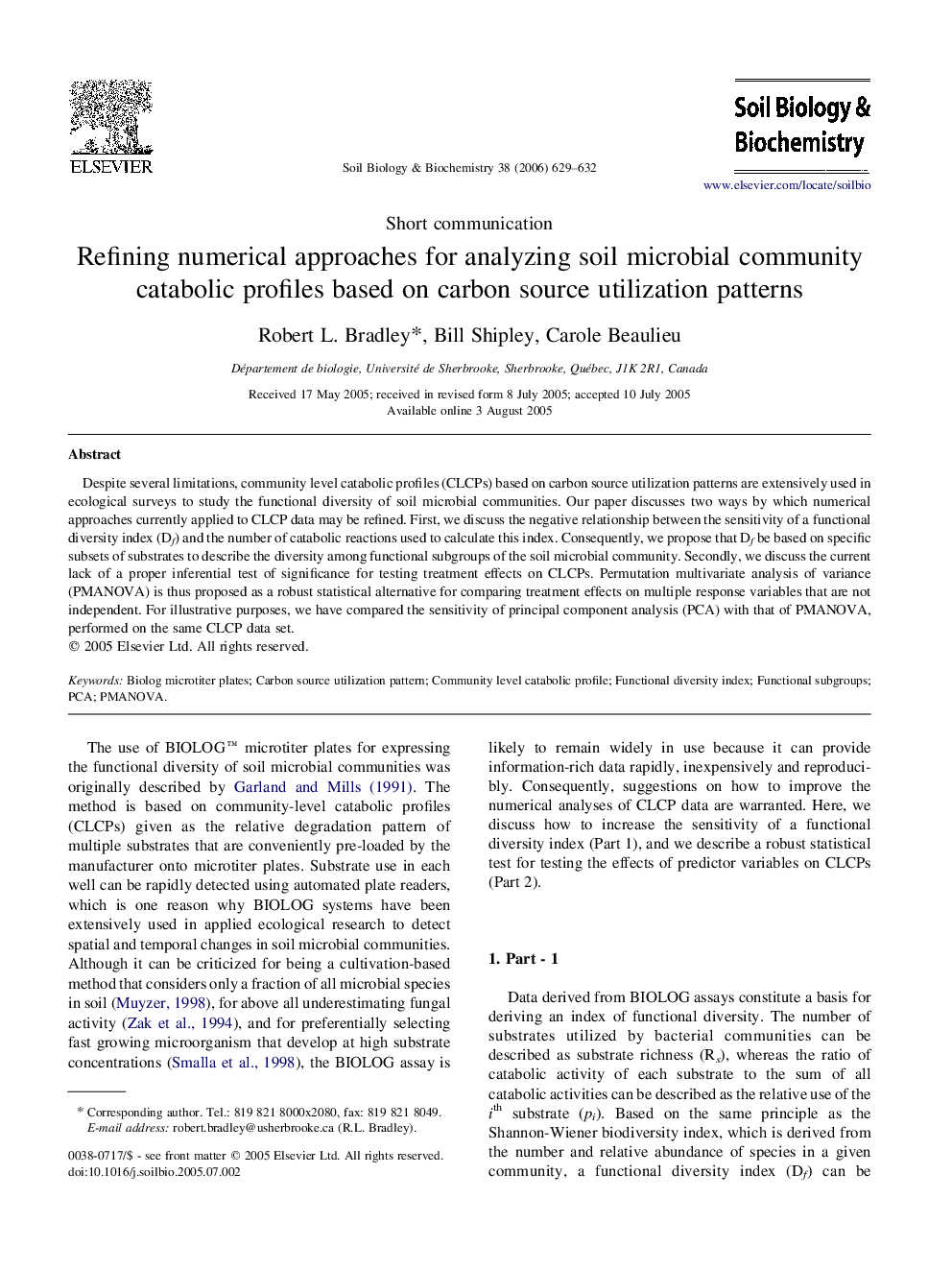| Article ID | Journal | Published Year | Pages | File Type |
|---|---|---|---|---|
| 2026702 | Soil Biology and Biochemistry | 2006 | 4 Pages |
Despite several limitations, community level catabolic profiles (CLCPs) based on carbon source utilization patterns are extensively used in ecological surveys to study the functional diversity of soil microbial communities. Our paper discusses two ways by which numerical approaches currently applied to CLCP data may be refined. First, we discuss the negative relationship between the sensitivity of a functional diversity index (Df) and the number of catabolic reactions used to calculate this index. Consequently, we propose that Df be based on specific subsets of substrates to describe the diversity among functional subgroups of the soil microbial community. Secondly, we discuss the current lack of a proper inferential test of significance for testing treatment effects on CLCPs. Permutation multivariate analysis of variance (PMANOVA) is thus proposed as a robust statistical alternative for comparing treatment effects on multiple response variables that are not independent. For illustrative purposes, we have compared the sensitivity of principal component analysis (PCA) with that of PMANOVA, performed on the same CLCP data set.
